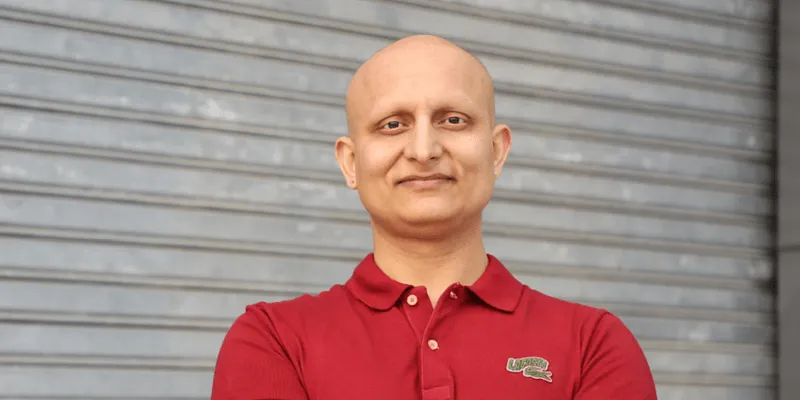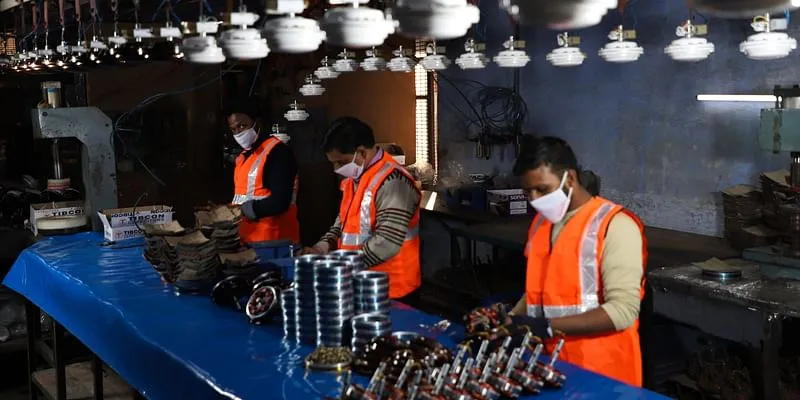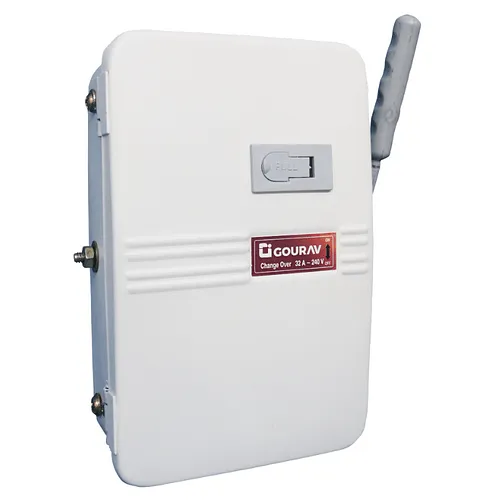With Rs 5k in his pocket, he came to Delhi. Now his family-run electricals brand earns Rs 52Cr revenue
Prem Khanna used to make electrical chokes in a small workshop at night and sell them at local markets during the day. Now, with his sons Gaurav and Pankaj at the helm, his company has grown into a Rs 52 crore revenue electricals brand.
Like most youth residing in rural areas around Delhi, Prem Khanna harboured dreams of moving to the capital city and building a life for himself.
When he left Kharkoda village, his parents gave him Rs 5,000 to help him pursue his dreams, and he found himself at the local factories in Delhi.
He worked out of a small room in the Shahdara district, and made chokes at night with his own hands and sold them at local markets during the day.
With his savings, Prem established ‘Gourav Luminaries’ in 1991 and began building his brand.
His sons Gaurav and Pankaj joined the business in 2010, and Gourav Luminaries — started from a single room — grew to become an electricals brand with four manufacturing units for its Otto modular switches (its bestselling product), Yodha switchgear, Hilyt LED lights, Viktor ceiling fans, etc., in the Sahibabad Industrial Area.
Gaurav, CEO at the firm, tells SMBStory,
“My father was street smart and a one-man army. He would save whatever he earned and invest in building the team by calling on his friends and relatives who needed work. Over the years, the electricals brand has grown into a Rs 52 crore revenue business with an 85-member strong workforce and 115 people employed as contractual labour.”
Presently headquartered in Shahdara, Gourav Luminaries will soon be relocating to Sahibabad Industrial Estate in Ghaziabad.

Gaurav Khanna, CEO, Gourav Luminaries
Distributor-based retail strategy
After over 25 years of spearheading the company, Prem is now retired from day-to-day operations. For the last three years, his sons Gaurav (CEO and Executive Director) and Pankaj (Chief Sales Officer) have been handling the business.
“We both joined the business in 2010 and worked under the guidance of our father till 2017. The transition process then started. In the last three years, we have grown over 100 percent,” Gaurav says.
The company has built a 250+ distributor and direct dealer network across North India, he says, adding that he assisted his father in setting up manufacturing units while Pankaj spearheaded sales and expanded the business’ retail channels.
Pankaj says, “We follow a manufacturing to sales distribution model, that is, principal to distributor to retailer to consumer. Since we are in the highly competitive fast moving electrical goods (FMEG) segment, we keep our costs as low as possible by using the latest technology in manufacturing, managing our supply chain via ERP based systems, producing good quality raw materials, etc.”
Gourav Luminaries’ target customers include middle-class households, with a majority of its sales coming from Tier I and II cities in North India. The business competes in the mid-segment price bracket, competing with unorganised local players in the region.

Pankaj Khanna, Chief Sales Officer, Gourav Luminaries
Creating an online presence
According to Pankaj, the brand has leveraged the Internet to push itself into the organised sector and looks to compete against the likes of Anchor, Bajaj, Crompton Greaves, etc.
Despite not selling to consumers directly, the brothers have been working on a vision to build the business’ online presence on social media.
They say their father “always conducted his business with devotion and took good care of all the vendors, customers, and employees,” and this ethos has inspired them to build a community around the brand.
By doing so, they believe, they have turned Gourav Luminaries from a business whose products moved in unorganised channels to one recognised as a brand in the organised FMEG market.
Gaurav explains, “After I took over the charge in the capacity of CEO, choosing the direction of the company was one of the most challenging and toughest decisions. I was taking over the legacy, not just a mere position. I was taking over my father’s life work.”
“It would have been easy to focus just on sales and distribution. But we decided to start creating the brand’s online presence by building a community where people can share content related to self-learning and skill development, and not by promoting our products directly. We also signed Mary Kom as our brand ambassador last year,” he adds.

Inside a Gourav Luminaries manufacturing unit
Focus on brand building
Pankaj says, “On our social media channels, we do not promote our products, but our values and vision for Gourav. We try to empower our target consumer with self-learning tools and inspire them by sharing stories of common people who have made an impact in society by their sheer hard work.”
This way, through its social media handles named YouPlusGourav and DeshkaGourav, the brand is looking to build its name in the FMEG space and place itself differently compared to other popular brands in the market.

A changeover switch made by Gourav Luminaries
“Some top brands choose to engage customers through retail and distribution channels. But our efforts to build a community around Gourav has helped us move from the unorganised to the organised market. Retail channels have already started taking us more seriously,” Gaurav says.
He adds, “However, it is still too early to look at the overall impact on our sales. In the next two to three years, we want to venture into home appliances and leverage our online community for sales.”
The road ahead
To realise its plans, Gourav Luminaries has to overcome the impact of COVID-19. The brothers say the first wave did not reach rural areas, but it still adversely affected cash flow and raw material supply.
“The second wave caught the industry unexpectedly. Demand has been severely hit. We feel the anxiousness and fear in the voice of our distributors. Right now, we decided to bear the cost of vaccination for all sales partners along with their family members,” adds Pankaj.
Gourav Luminaries is working in a competitive and growing FMEG industry, buoyed by growth in residential, commercial, and industrial infrastructure.
As the pandemic passes and demand return, the brothers remain optimistic about the future of the company inherited from their father. They look to expand their sales channels, move to a new corporate office, double the revenue, and continue building the brand’s online presence.
Edited by Suman Singh










